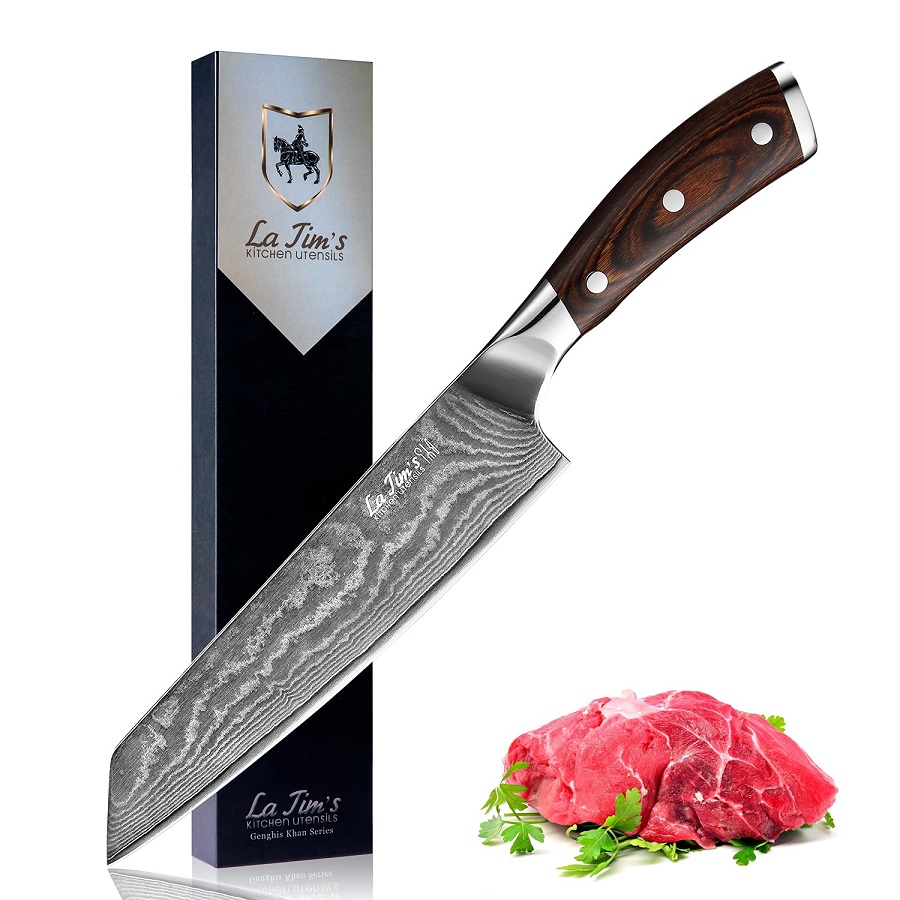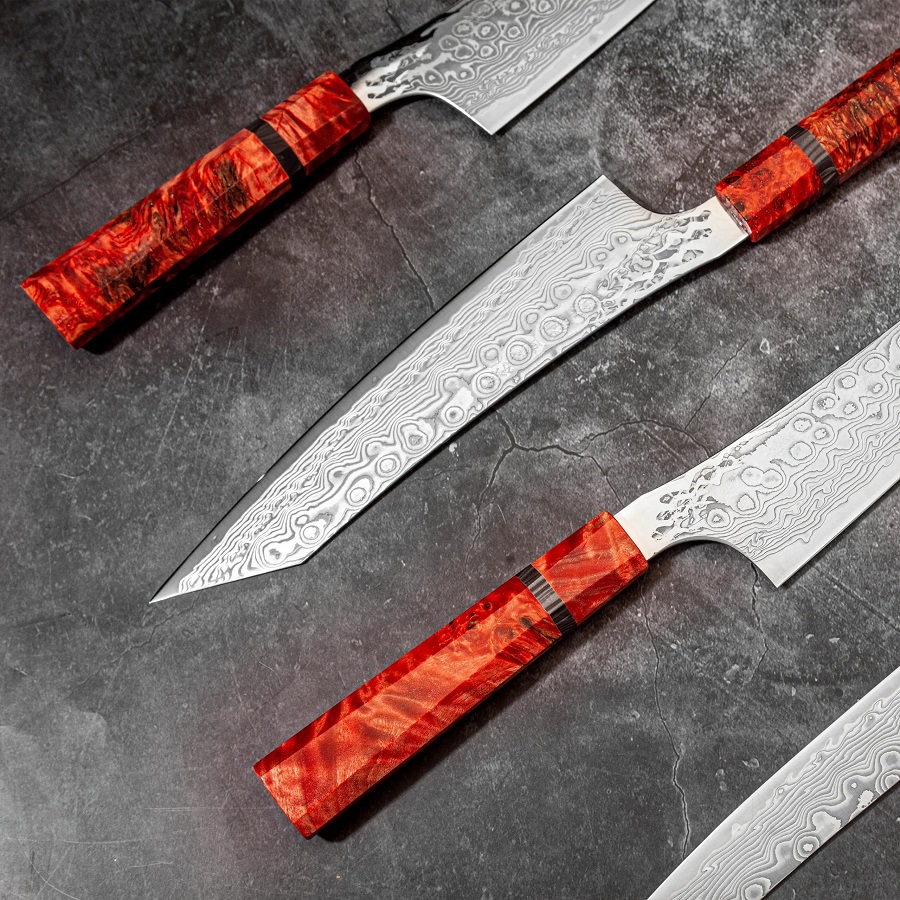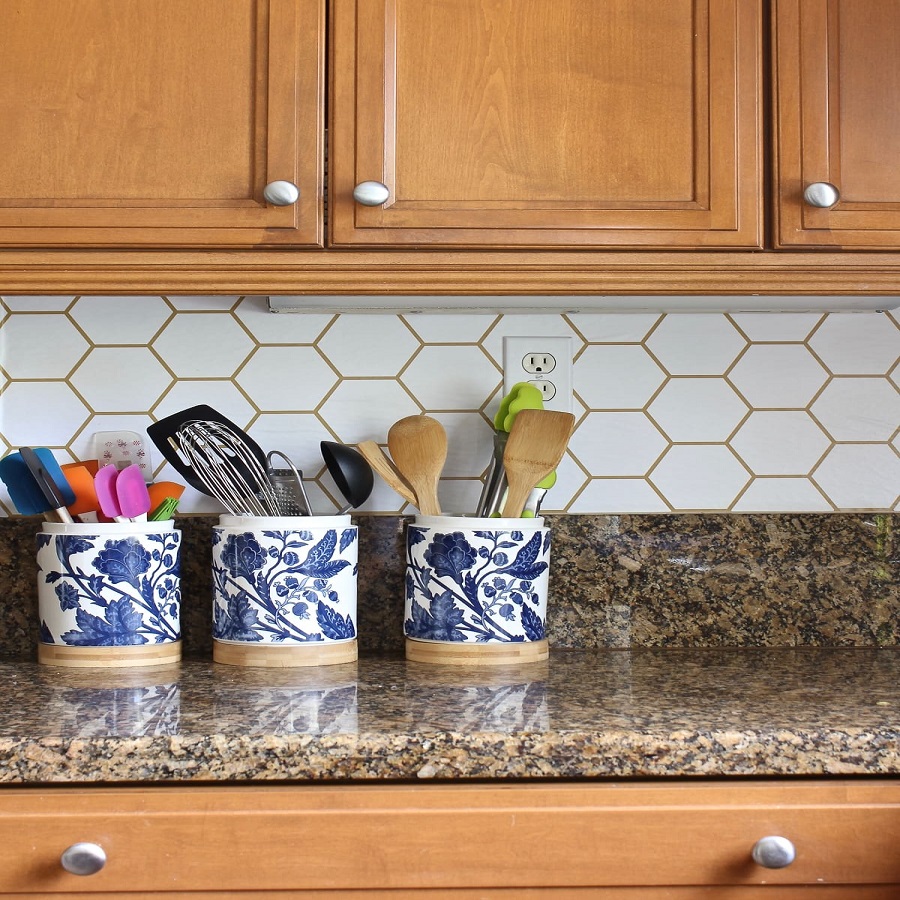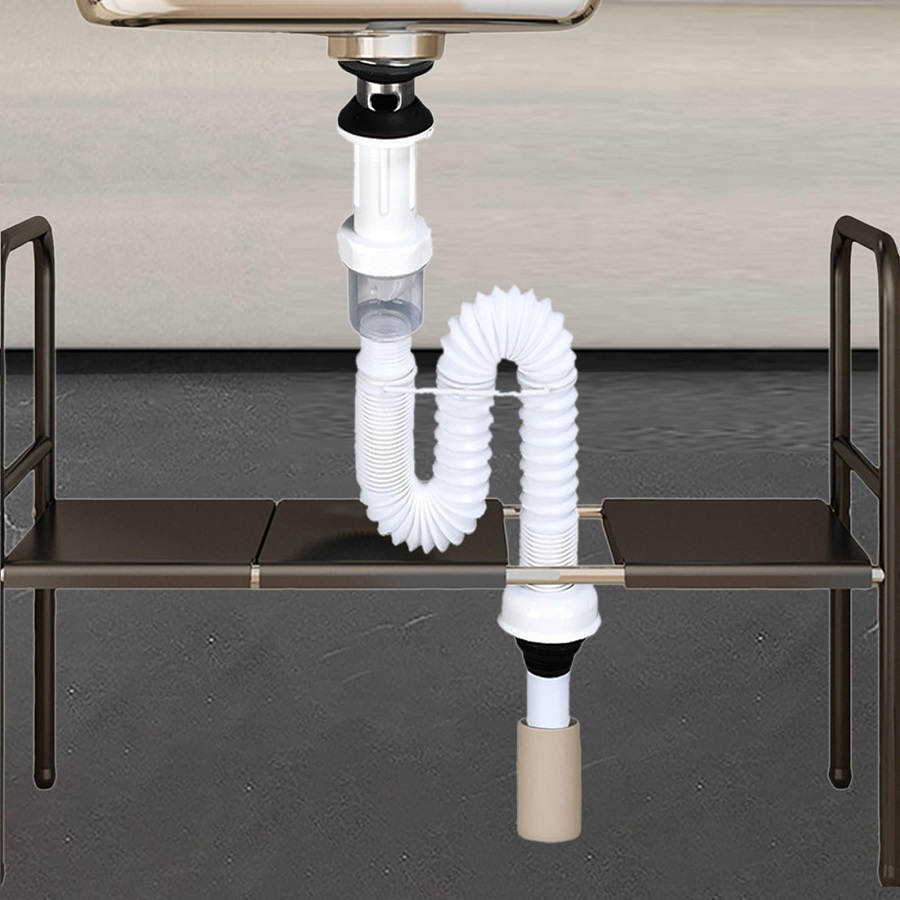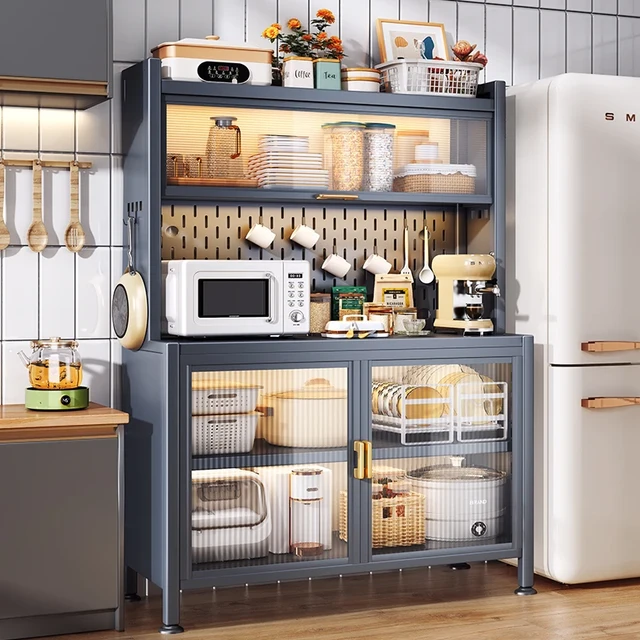Introduction
How to dispose of old kitchen knives – Disposing of old kitchen knives can be a bit challenging, as you want to ensure safety, both for yourself and anyone who might handle the knives after you’re done with them. Simply tossing them into the trash can pose a risk of injury, as the sharp blades can easily cut through trash bags or injure waste handlers. Here’s a comprehensive guide on how to appropriately and safely dispose of old kitchen knives.
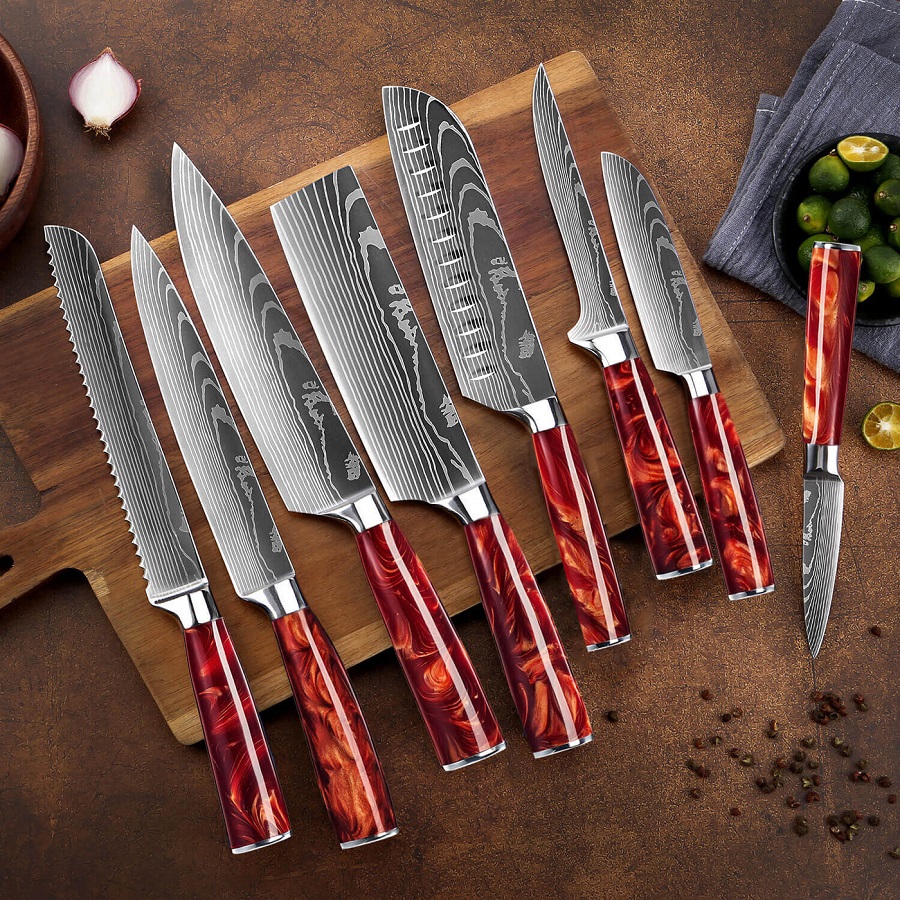 Identifying When to Replace Your Kitchen Knives
Identifying When to Replace Your Kitchen Knives
Sometimes, it’s clear that it’s time for new kitchen knives. Knowing when to make the change is key. Here, we’ll look at signs that your knives no longer cut it.
Signs of Wear and Damage
As you use kitchen knives, they show signs of wear. Chips or cracks in the blade are big warnings. A bent or broken tip disrupts proper cutting. If knife handles come loose or feel wobbly, it’s time for a change. Also, watch out for rivets. If they loosen, the knife might not be safe to use.
Safety Concerns with Old Knives
Safety is always a concern with worn-out knives. Old, damaged knives can slip and are harder to control. This increases the chance of cuts or injuries. Loose handles or broken tips can also be dangerous. If your knives show these signs, think about disposing of them. Next, we’ll discuss how to get rid of old kitchen knives safely and responsibly.
Methods for Disposing of Old Kitchen Knives
Once you’ve identified that your kitchen knives have reached the end of their lifespan, you’ll need to consider how to dispose of them safely. Here are several methods that ensure your old knives won’t cause harm to others and are disposed of responsibly.
Selling Your Used Knives
If your knives are still in good shape, selling them might be a smart choice. List them on online marketplaces. You could make some money back and give your knives a new home.
Donating to Charitable Organizations or Individuals
Well-maintained knives could also help others. Consider donating to charity, non-profits, or someone starting fresh. Ensure the knives are safe to use before donating.
Recycling Knives Responsibly
Knives beyond repair should not go to waste. Look for scrap metal centers or local recycling programs. They will handle your knives in a safe, eco-friendly way.
Throwing Away Knives Safely
Lastly, if your knives can’t be sold, donated, or recycled, you need to throw them away carefully. Secure the blade with cardboard and tape. Mark the package to alert waste handlers to the sharp contents inside.
Preparing Your Knives for Disposal
Before you dispose of your old kitchen knives, preparation is crucial. This ensures safety during disposal. Follow these steps for cleaning and securing your knives before disposal.
Cleaning and Securing Knife Blades
Start by cleaning your knives. Use soap and warm water to wash the blades. Dry them thoroughly. Once clean, you need to secure the blades. This prevents injury to anyone handling them afterwards. Use cardboard to cover the blade. Tape it securely. A knife sharpener won’t be necessary for this step as you’re preparing to dispose of the knives, not reuse them.
Packaging Tips for Different Disposal Methods
Different disposal methods require different packaging. Here’s how to pack your knives based on how you plan to get rid of them.
For selling or donating: Wrap the blade in bubble wrap. Secure with tape. Ensure the handle is visible. This makes it clear it’s a knife.
For recycling: Check with local facilities on their requirements. Some might prefer knives to be left unwrapped for easy material identification.
For throwing away: Wrap the blade in several layers of newspaper. Then encase in cardboard. Tape all around. Clearly label the package with ‘Caution: Sharp’ to warn handlers.
These packaging tips help you prepare your old kitchen knives for safe disposal. They make sure that, whether the knives are sold, donated, recycled, or thrown away, they won’t pose a hazard. Always follow these guidelines closely when learning how to dispose of old kitchen knives.
Safe Disposal Practices
Before you get rid of old kitchen knives, it’s important to handle them with care. Knives are sharp and can easily cause injuries if not handled properly. Here’s what you need to know to prevent accidents during disposal.
Handling with Care to Prevent Injuries
- Wear Gloves: Protect your hands by wearing gloves when you handle old knives.
- Secure the Blade: Use cardboard to cover the blade’s edge. Secure it with tape.
- Careful Packaging: If you’re throwing knives away, wrap the blade in newspaper then in cardboard. Tape it well.
- Label Clearly: Write a warning like ‘Caution: Sharp’ on the package. It helps alert others.
- Direct Handling: When handing over knives, give them handle first. Keep the tip pointing down.
- Disposal One at a Time: Don’t throw away many knives at once. Wrap and dispose of each knife separately.
Understanding Local Disposal Regulations
Disposal laws differ in every area. Check your local rules to avoid fines or legal issues.
- Contact Authorities: Call your local waste management or recycling center. Ask them about knife disposal policies.
- Follow Guidelines: Do as they instruct, whether it’s recycling or special trash pickup.
- Use Designated Bins: Some places have specific bins for sharp objects. If available, use them.
- Consider Drop-Off: Many areas have drop-off points for hazardous materials. This can include knives.
- Don’t Hide Knives: Never conceal knives in other trash. It’s unsafe for waste managers.
By following these disposal practices, you can safely dispose of your old kitchen knives. Remember to stay careful and check your local regulations. This will ensure you are not only safe but also law-abiding during the process.
Alternatives to Disposal
Before saying goodbye to your old kitchen knives, consider alternatives to disposal. There may be ways to give them a second life.
Repurposing Old Knives
Old knives may seem useless, but you can repurpose them. Transform them into garden tools, or sharpen them to cut cardboard. Use them for arts and crafts, or turn them into a DIY knife holder. Be creative!
Repairing and Restoring Knives
Sometimes, a good sharpening can restore an old knife’s edge. You can also tighten loose handles or replace worn handles. If the blade is not too damaged, this could save your knife from disposal. It can extend its usage, making it a sustainable choice.
Investing in New Kitchen Knives
After you safely dispose of old kitchen knives, it’s time to invest in new ones. When choosing replacements, look for quality and durability.
Choosing Quality Replacement Knives
Search for knives made with high-grade steel. They stay sharp longer and are more reliable. A well-balanced knife ensures easier, safer cutting. Think about knife sets. They offer variety for different tasks. Read reviews before buying. This helps you find the best value for your money.
Choose knives with comfortable handles. They should feel secure in your hand. A full tang design, where the blade extends into the handle, offers better balance and strength.
Look for knives with solid warranties. Companies that provide these stand behind their products. This means you’re more likely to get a knife that lasts.
Maintaining Your New Kitchen Knives for Longevity
Once you have new knives, keep them sharp. Use a knife sharpener regularly. This means less force while cutting and safer use.
Clean knives by hand. Avoid dishwashers as they can damage knife blades. Store knives in a block or on a magnetic strip. This keeps them from becoming dull or damaged.
Keep knives dry to prevent rust. Oil them if the manufacturer recommends it. Follow the care instructions that come with your knives. This ensures they last longer.
By choosing quality kitchen knives and caring for them properly, you can avoid frequent replacements. You ensure a longer lifespan for your investment.
Educate Others on Safe Disposal
Sharing your knowledge about safe knife disposal can help others avoid injury and ensure responsible disposal practices. Talk to friends, family, or your community about the importance of safe disposal and demonstrate how to wrap or secure knives properly.
Conclusion
Old kitchen knives can pose a safety hazard if not disposed of properly. Evaluating their condition, choosing responsible disposal methods, and considering options for repair, donation, or recycling can facilitate a safe and environmentally-conscious approach. Always prioritize safety, and when in doubt, consult local regulations or professionals for the best practices in your area. By following these guidelines, you not only ensure safety but also contribute to responsible waste management practices that benefit the entire community.

